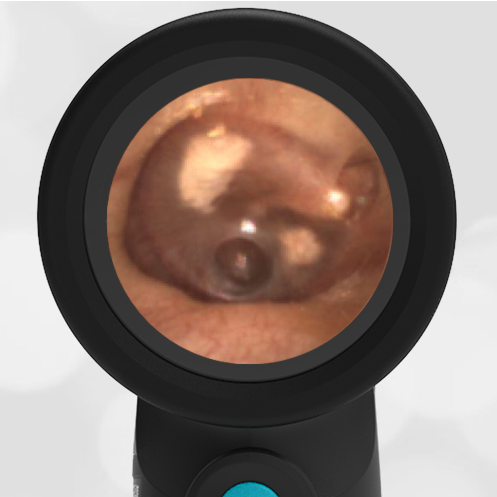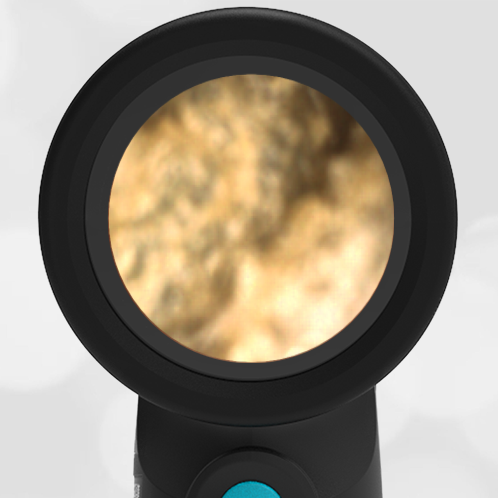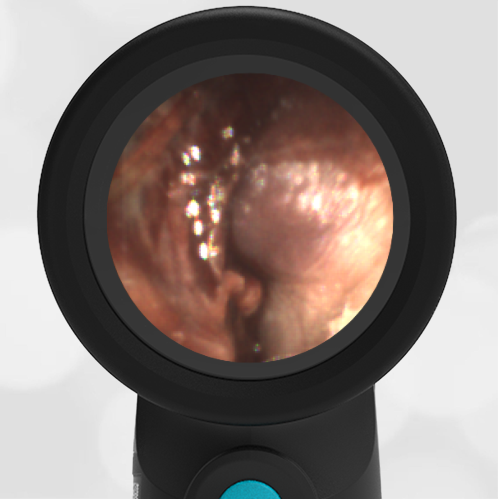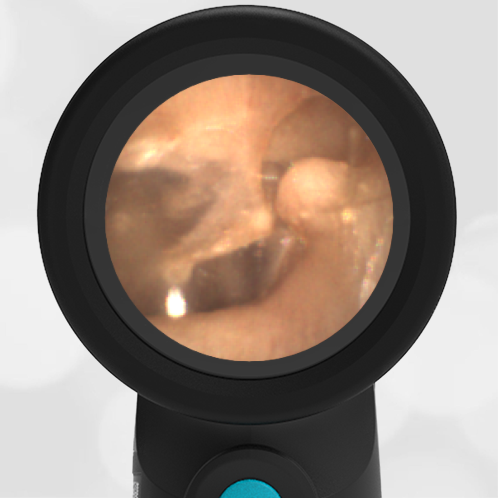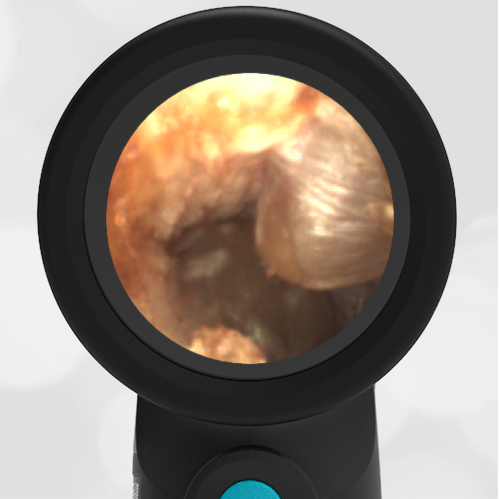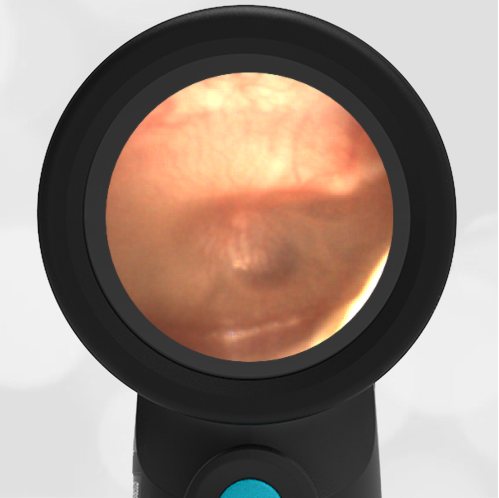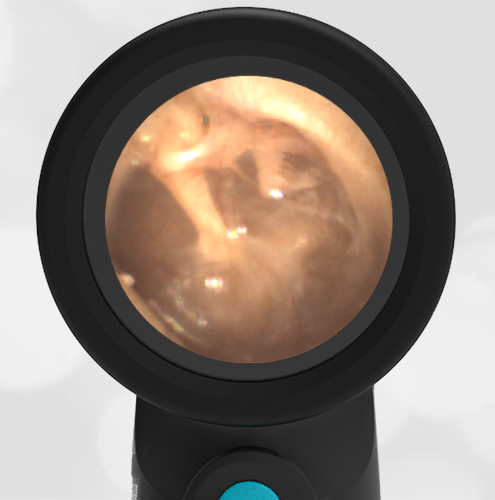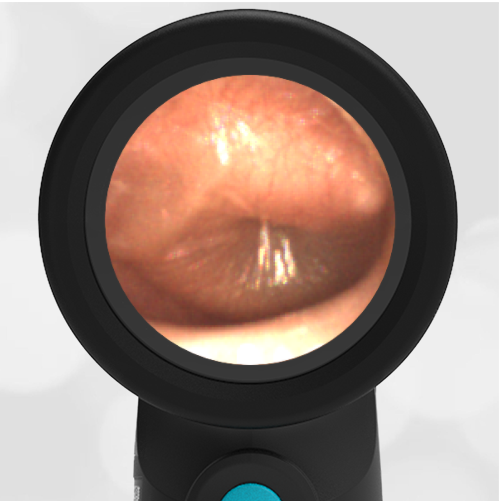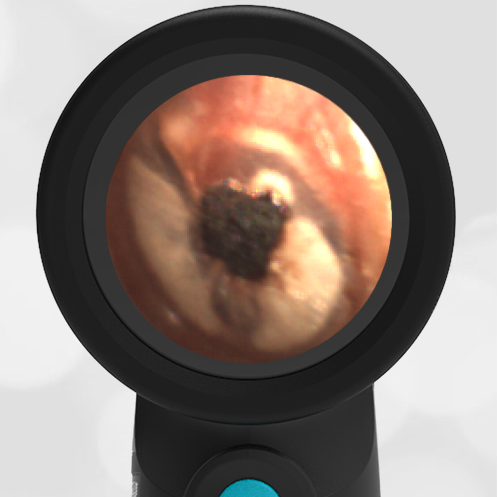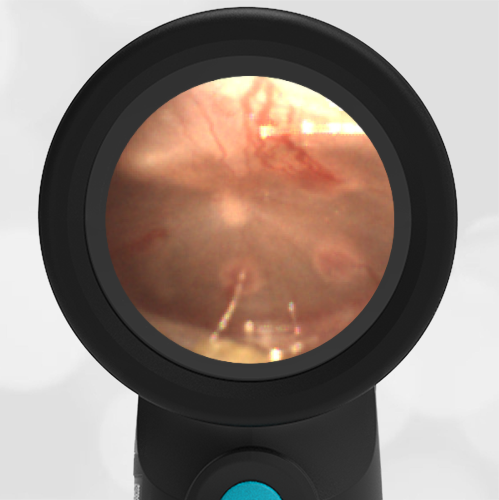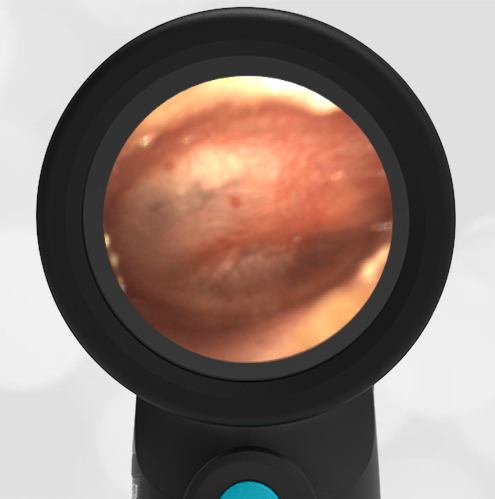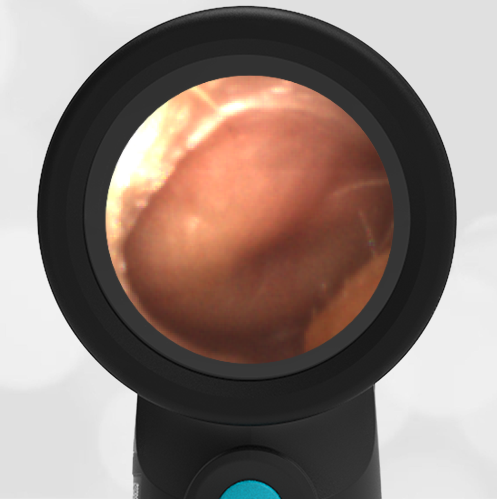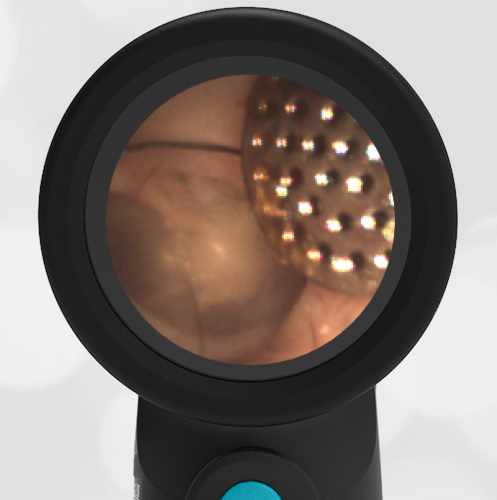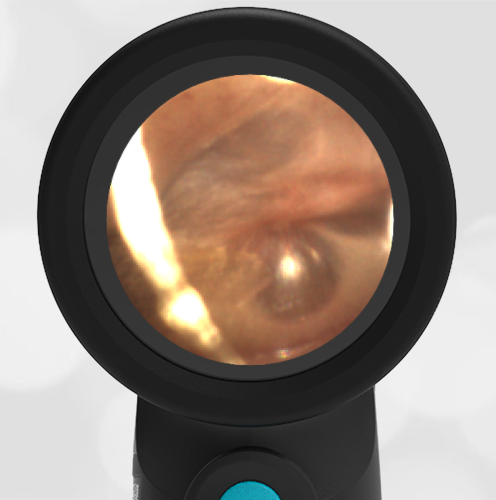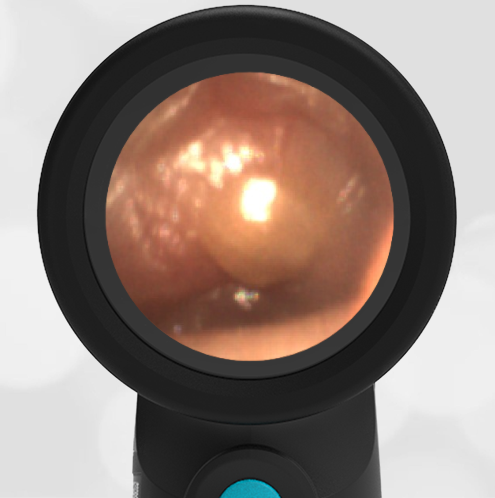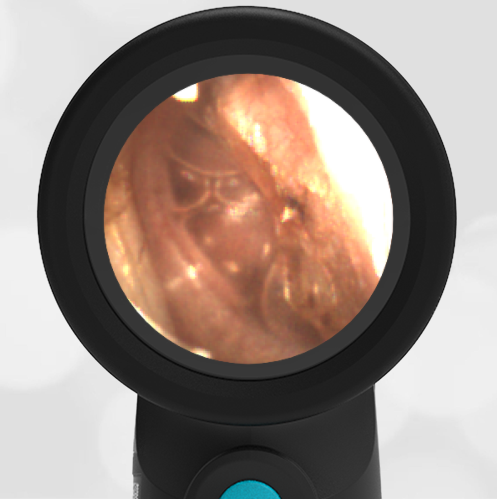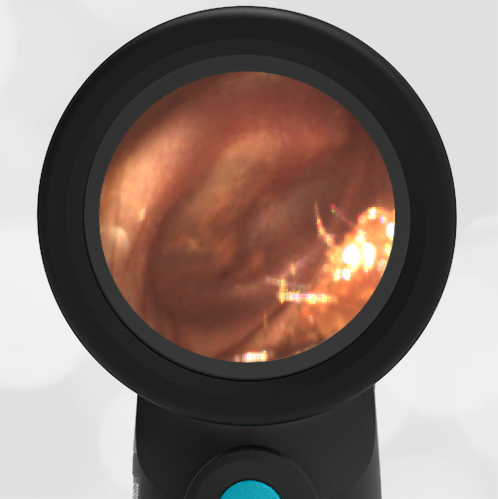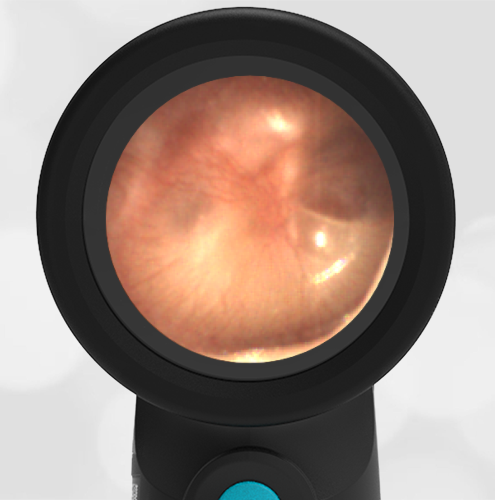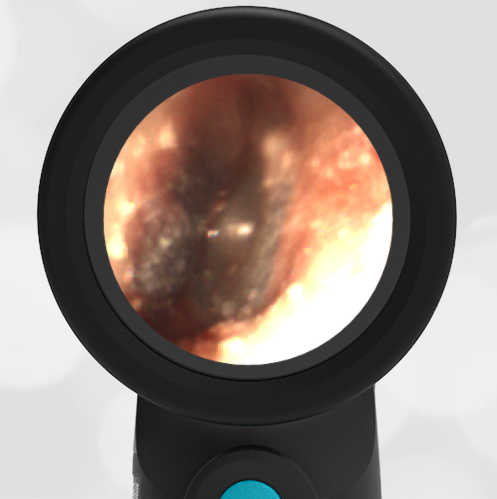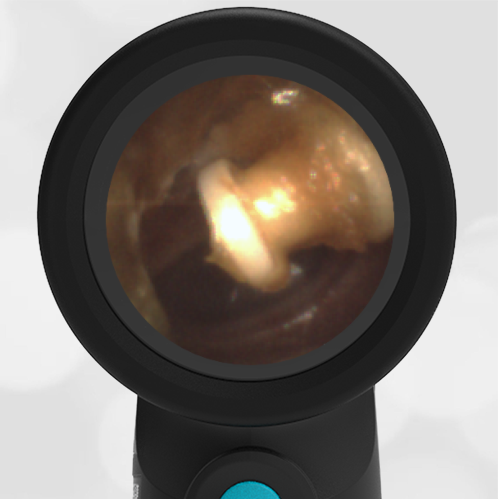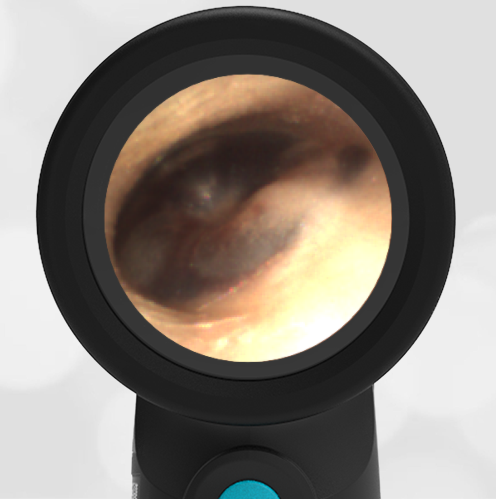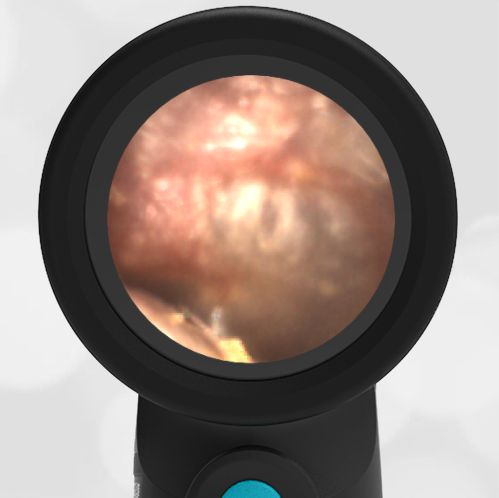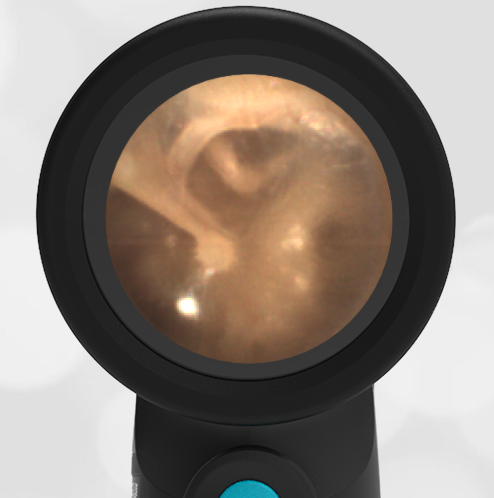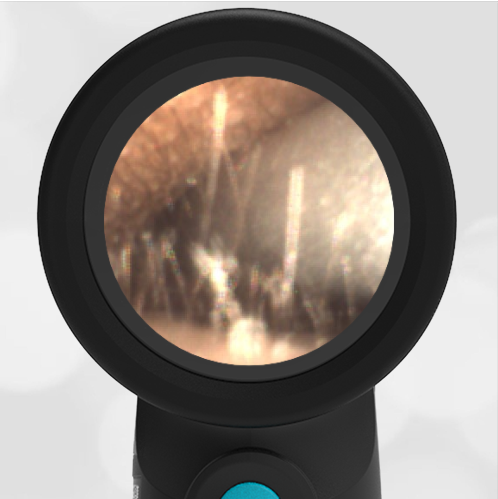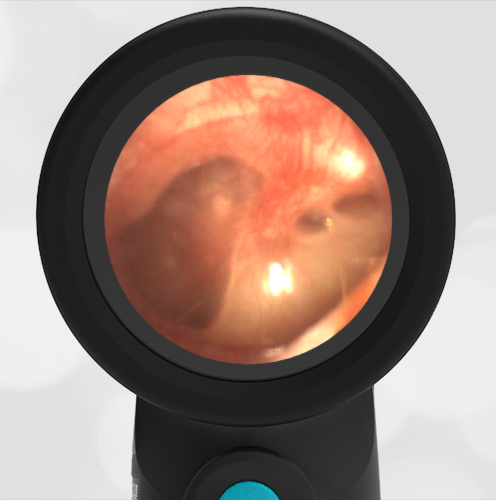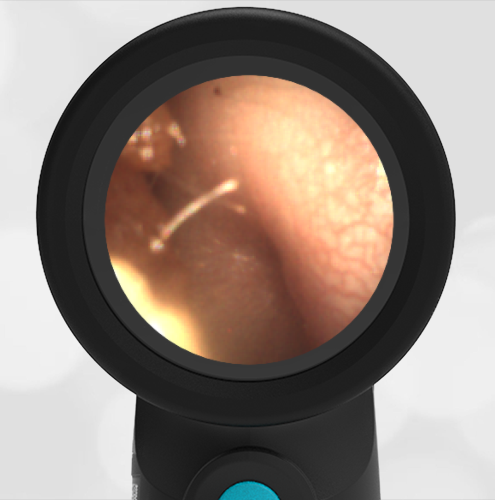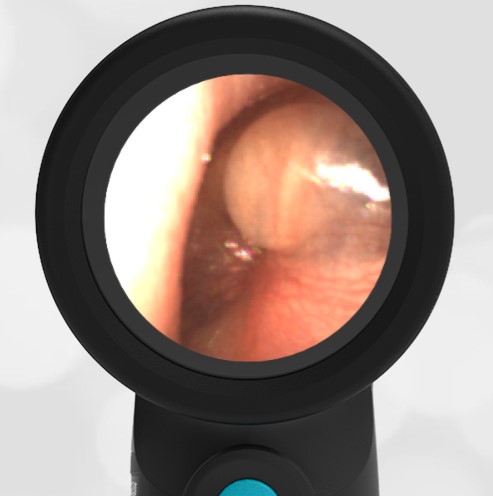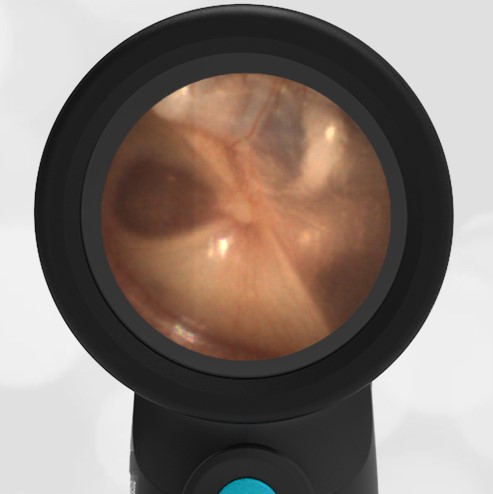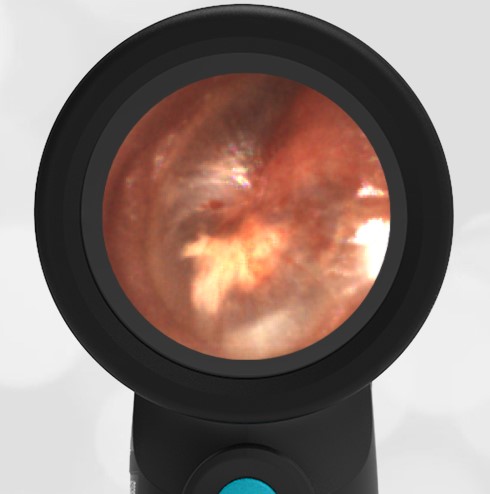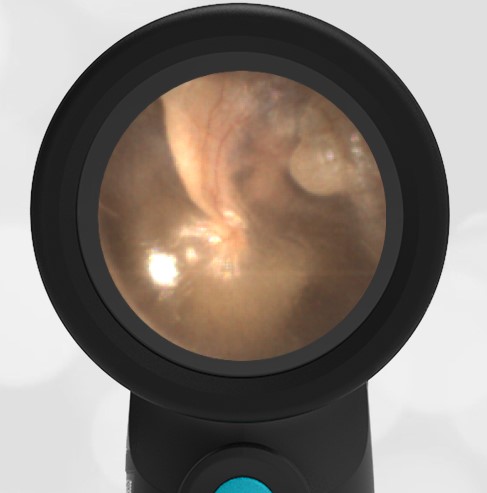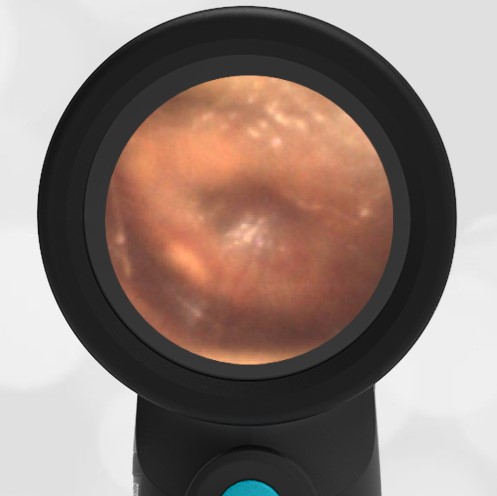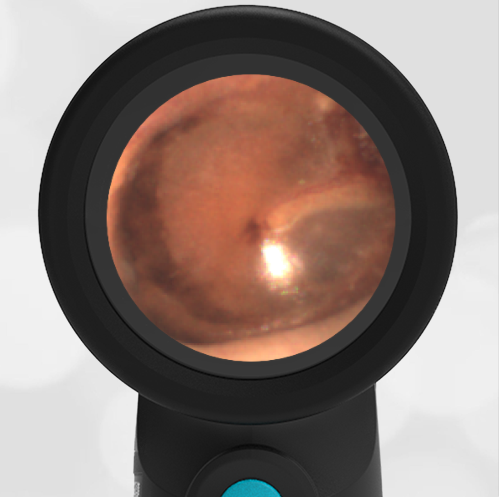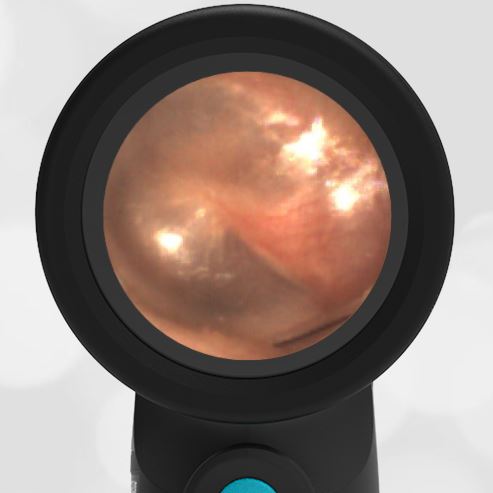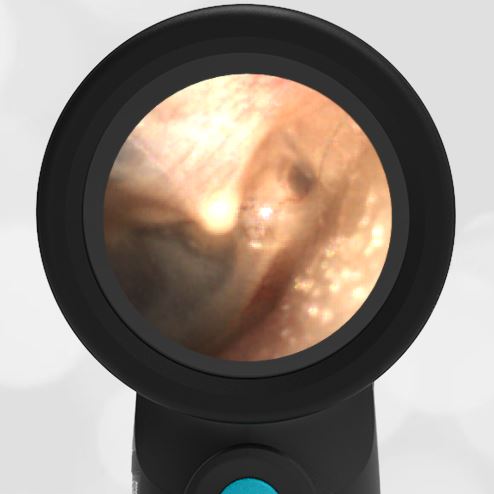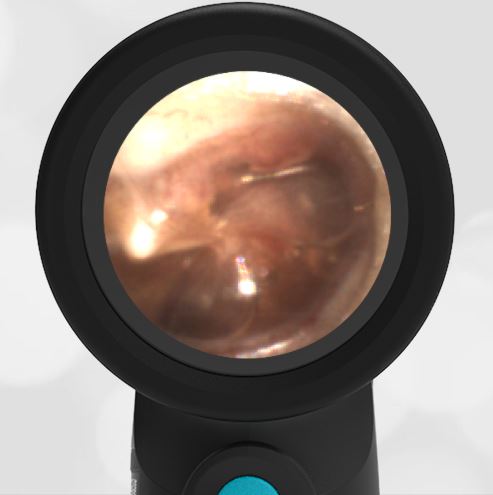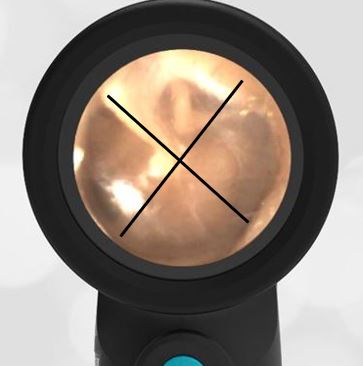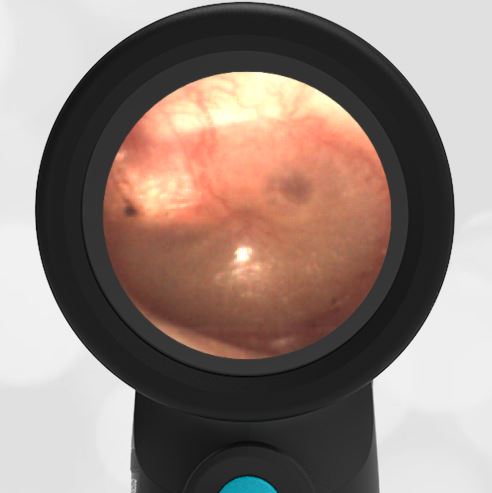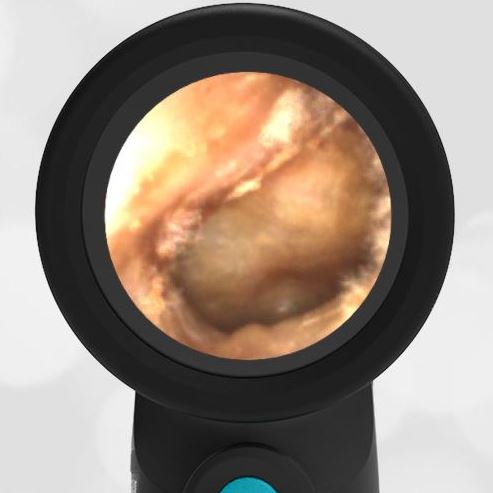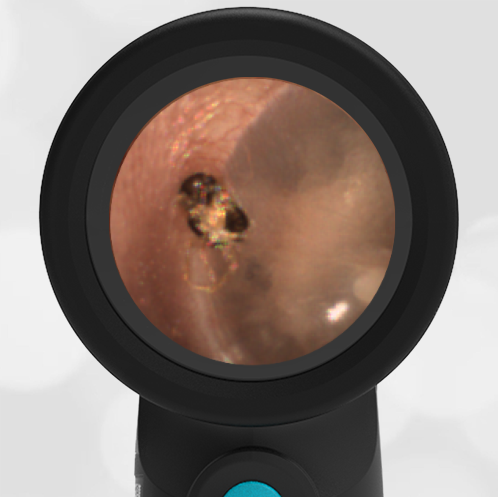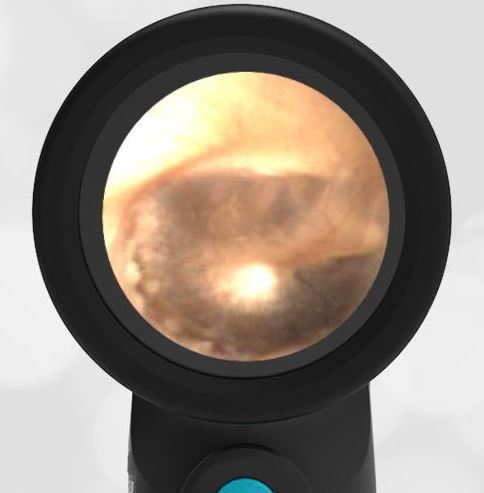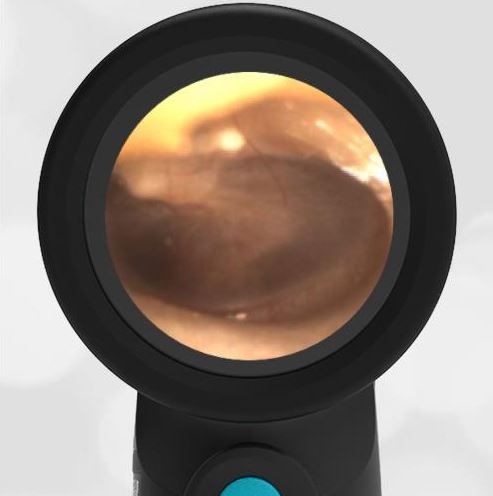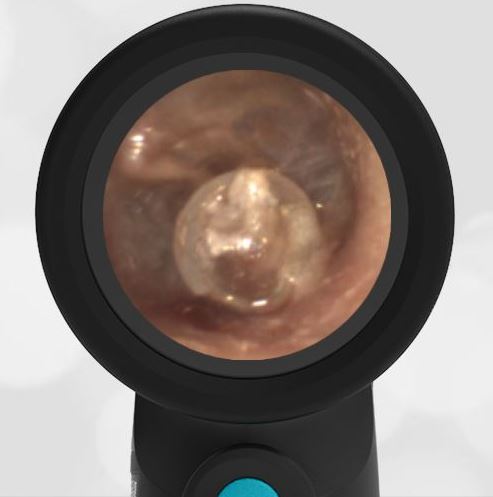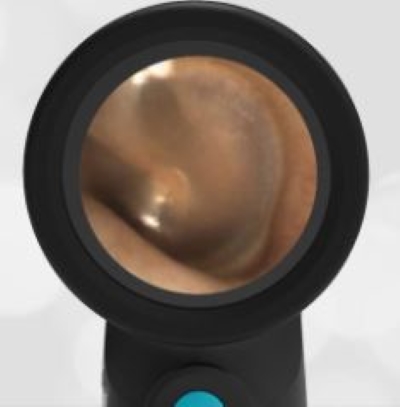
Bilateral Osteoma – August 22, 2024
An active 36-year-old male presents to the emergency department for a concern unrelated to his ears. However, his Wispr digital otoscopic ear exam reveals an interesting finding.
Which of the following is most likely the patient’s favorite pastime?
- Diving
- Mountaineering
- Surfing
- No indication from this image
Answer 4. No indication from this image.

The patient has an osteoma in his external ear canal (EAC). An osteoma is a benign bony neoplasm with no specific cause. Osteomas are generally single, unilateral, and have a pedunculated base while exostoses are often multiple, bilateral, and have a wider base. An osteoma can be easily confused with an exostosis, the other common lesion found in the EAC. Exostosis is associated with exposure to cold water such as from surfing. Diving is associated with ear trauma such as perforation. Mountaineering is not associated with any specific ear finding although Eustachian tube dysfunction can cause an uncomfortable sensation, like ear popping during descent in an airplane.
- Left Ear Osteoma
- Exostosis
The two growths can be difficult to distinguish in mild cases by appearance alone. However, they are histologically distinct with exostoses having a laminated appearance representing layers of newly formed bone. This is believed to occur when repeated exposure to cold water triggers periostitis resulting in sequential episodes of osteogenesis, giving rise to the term “surfer’s ear.” Osteomas arise from cancellous bone and lack the layered growth pattern of exostoses. Both lesions are generally asymptomatic unless they enlarge enough to cause conductive hearing loss. In these instances, referral to otolaryngology (ENT) is warranted for further evaluation and potential surgical removal.
Although osteomas are generally unilateral, this patient had evidence of osteomas in both ears.
- Left Ear Osteoma
- Right Ear Osteoma
Reference
Here are the video exams from the Wispr otoscope of both ears:
|
Left Ear Video |
Right Ear Video |







